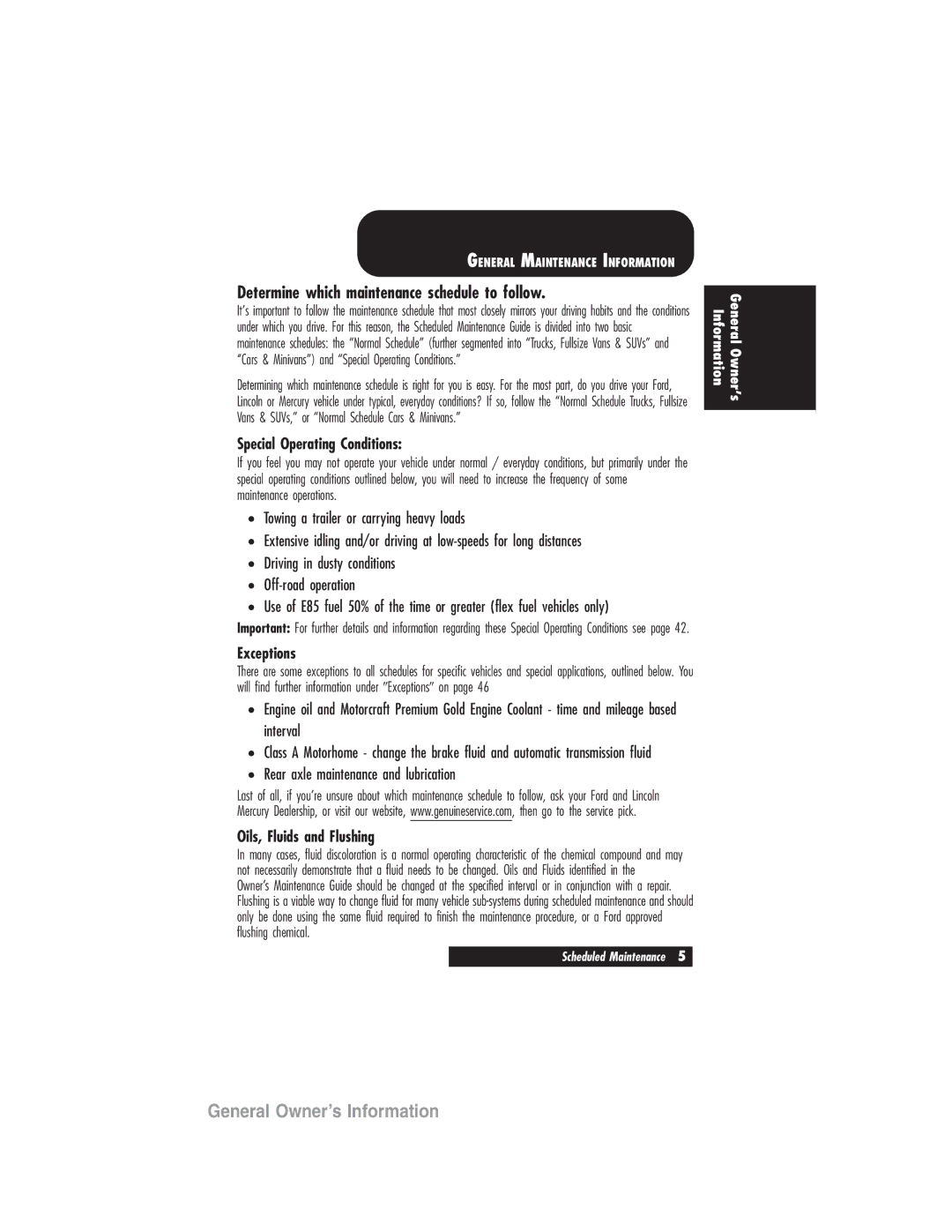2007 specifications
In 2007, Ford continued to establish its presence in the automotive market through a range of innovative features, technologies, and characteristics that appealed to a diverse customer base. This year was marked by notable refreshes and new introductions in various segments, solidifying Ford's reputation for quality and reliability.One of the standout vehicles of this year was the Ford F-150, which retained its position as one of the best-selling trucks in America. The 2007 F-150 featured a new front-end design with a more aggressive stance, updated grille, and enhanced aerodynamics. This year also introduced new engine options, including a robust 5.4-liter V8 that provided excellent towing capacity, making it a favorite among consumers who required both power and versatility.
The Ford Fusion also gained attention in 2007 as a stylish and fuel-efficient midsize sedan. It was characterized by its sleek exterior and comfortable interior, offering features such as optional leather seats, a premium audio system, and advanced safety technologies. The Fusion's lineup included both four-cylinder and V6 engine options, providing consumers with a choice based on their performance needs. Additionally, the Fusion earned high safety ratings due to its comprehensive set of airbags and stability control systems.
Ford's commitment to innovation was evident in its introduction of the SYNC technology in 2007, developed in partnership with Microsoft. This cutting-edge system allowed drivers to connect their mobile devices seamlessly and control them via voice commands, enhancing the overall driving experience. SYNC technology enabled hands-free phone calls, music selection, and navigation, setting a new standard in in-car connectivity.
Moreover, 2007 saw the launch of the Ford Edge, a midsize crossover SUV designed to blend the versatility of an SUV with the smooth handling of a car. The Edge featured a spacious interior, advanced infotainment options, and a comfortable ride, making it an attractive choice for families.
Ford’s commitment to fuel efficiency also became increasingly apparent, with advancements in engine technologies aimed at reducing emissions and improving MPG ratings across its lineup. This was part of Ford's broader strategy to address environmental concerns and align with consumer preferences for more sustainable driving options.
Overall, the Ford lineup of 2007 showcased a balance of performance, technology, and comfort, meeting the varied needs of today’s drivers while staying ahead of industry trends. The innovations introduced during this year laid the groundwork for Ford's future developments and solidified its status in an evolving automotive landscape.

